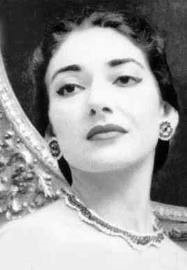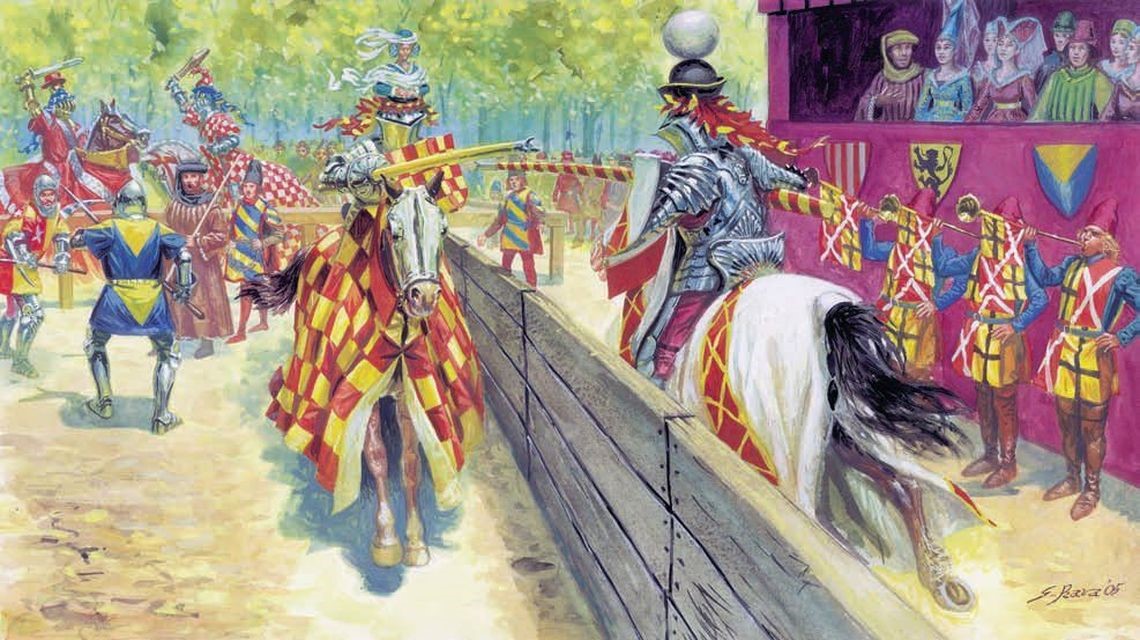A beautiful love story marked the lives of two celebrities of the twentieth century, Aristotle Onassis and Maria Callas.
The one who would become an unmistakable soprano was born on December 2, 1923, in New York, from other sources on April 23, being the daughter of some Greek immigrants. Her real name was Cecilia Sophia Annamaria Kalogeropoulos.  In 1929, his father changed his name from Gheorghion Kalogeropoulos to Geoges Callas, after which he opened a pharmacy in the Manhattan neighborhood of New York. Eight years later, the parents split up and his mother, Evangelia, left with her 14-year-old daughter for her native Greece. In 1938, Maria was admitted to the Athens Conservatory and studied piano with Maria Tivella. She won the grand prize in the first competition due to the way she played the role of Santuzza in Cavalleria Rusticana by Pietro Mascagni. Between 1942 and 1945, she performed various roles at the Royal Opera House in Athens. Gradually, she is known and appreciated by the public and specialists, due to some exceptional interpretations in the works Tosca by Puccini, Fidelio by Beethoven and others.
In 1929, his father changed his name from Gheorghion Kalogeropoulos to Geoges Callas, after which he opened a pharmacy in the Manhattan neighborhood of New York. Eight years later, the parents split up and his mother, Evangelia, left with her 14-year-old daughter for her native Greece. In 1938, Maria was admitted to the Athens Conservatory and studied piano with Maria Tivella. She won the grand prize in the first competition due to the way she played the role of Santuzza in Cavalleria Rusticana by Pietro Mascagni. Between 1942 and 1945, she performed various roles at the Royal Opera House in Athens. Gradually, she is known and appreciated by the public and specialists, due to some exceptional interpretations in the works Tosca by Puccini, Fidelio by Beethoven and others.
She arrived in New York and later in Chicago, where in January 1947, she successfully played the lead role in Puccini’s Turandot. In June, the same year, accompanied by bassist Nicolae Rossi-Lemeni, she will arrive in Italy where she meets Giovanni Zanatello, the director of the Arena in Verona, who entrusts her the main role in the opera La Gioconda by Amilcare Ponchielli. The premiere took place on August 6, in front of 20,000 spectators. The success was unexpected. In Verona, she met her future husband, Giovanni Battista Meneghini, a wealthy industrialist, 37 years old, whom she married on April 21, 1949. After the liquidation of the business, her husband became her manager, impresario and theater agent.
After a season on stage in Florence, she is called to La Scala in Milan, where she has had brilliant performances in the operas Traviata, Aida, Norma and others, unmatched until now. She then went to Chicago and London, returning to Milan with the operas Lucia de Lammermour,  Aida, Il Trovatore and La Traviata. She lived beautiful, sometimes stormy, love stories with director Luchino Visconti, stage director Franco Zeffirelli and tenor Giuseppe di Stefano.
Aida, Il Trovatore and La Traviata. She lived beautiful, sometimes stormy, love stories with director Luchino Visconti, stage director Franco Zeffirelli and tenor Giuseppe di Stefano.
In the summer of 1959, the wealthy Greek shipowner Aristotle Onassis invited her on a cruise on his yacht Christina with high personalities of the time. They loved each other like two excited teenagers. When they were not together, they sent long letters of love. They felt made for each other. Their reunion generates moments of happiness. Everyone thought they had found their dream partner, their soulmates. Maria Callas has a great passion for Aristotle Onassis, divorcing Meneghini, who thus obtains a fortune of 15 million dollars. Onassis, jealous, began to keep her away from the stage. At Zeffirelli’s insistence, she reappears in London, in 1954 in Tosca, then in Paris in Norma and also with Tosca in New York.
Then comes the decline. In Rome, she will interrupt the show with Norma in the second act due to a sudden loss of voice. In 1960, Maria Callas became pregnant with Aristotle Onassis. Sources disagree on what happened next. Some of her relatives claim that Onassis forced her to give up the child. Another variant advances the idea that Maria gave birth by cesarean section, at eight months. The baby named Omero Lentini died two hours after birth, then buried in a cemetery in Milan. As a harbinger of the impending separation, Aristotle Onassis began to systematically insult her. At one point he told her that she was an anonymous woman with a whistle in her throat that no longer worked.
 Onassis leaves her to marry Jacqueline, the widow of US President John F. Kennedy, who was assassinated in Dallas in 1963. The wedding took place in 1968 on Skorpios Island. The new wife was six years younger than Maria Callas. Jacki, in turn, had become particularly possessive, unwilling to share Aristotle Onassis with another woman, as had happened to Kennedy, who had not given up on Marilyn Monroe.
Onassis leaves her to marry Jacqueline, the widow of US President John F. Kennedy, who was assassinated in Dallas in 1963. The wedding took place in 1968 on Skorpios Island. The new wife was six years younger than Maria Callas. Jacki, in turn, had become particularly possessive, unwilling to share Aristotle Onassis with another woman, as had happened to Kennedy, who had not given up on Marilyn Monroe.
In 1973, Maria Callas and tenor Giusseppe di Stefano embarked on a world tour, which ended a year later in Japan. His voice no longer made the audience delirious. The stage sense, timbre, vocal extension and vitality were far from what they had once been. She retired to Paris, forgotten by the world, where he died on September 16, 1977, at the age of 54, for reasons not at all clear, not elucidated until now. Did he die of a pulmonary embolism or commit suicide while taking an overdose of medication? She was buried in the Père Lachaise Cemetery in Paris.
Maria Callas had a valuable collection of jewelry that, after her death, was exhibited in New York, London and Paris, after which it was put up for auction in November 2004 in several Swiss cities. It included, among other things, a diamond ring worth 100,000 pounds, a 11-piece jewelry set – 200,000 pounds, an emerald ring 60,000 pounds, a diamond rubles brooch 40,000 pounds.
Before concluding, a few words about Aristotle Onassis.
 He was born on September 21, 1906, in Smyrna, the current city of Izmir in Turkey, to Greek parents. He had countless mistresses and two wives.
He was born on September 21, 1906, in Smyrna, the current city of Izmir in Turkey, to Greek parents. He had countless mistresses and two wives.
His first wife was Athina Mary Livanos, the daughter of tycoon Stavros Livanos, whom he married on December 28, 1946. Tina, as her friends called her, had American citizenship. They lived in New York where their two children, Alexander (1948-1973) and Christina (1950-1988), were born. In his youth, Aristotle lived for a time in Argentina, where he obtained the citizenship of the host country. He was appointed consul general of Greece in that country. He made his first money from the tobacco business and other less orthodox goods.
Millionaire overnight, he began to buy ships that were particularly cheap, due to the global economic crisis. Taking advantage of the opportunities, he purchased six Canadian ships with a symbolic sum of $ 20,000.
The number of oil tanks increased in proportion to wealth. At one point, he paid $ 7 million in damages because his fleet had flown the American flag, even though the shipowner was Greek-Argentine. It was the main reason that determined him to become an American citizen urgently through the mentioned marriage. He then bought a Greek airline on the verge of bankruptcy. After his son lost his life in a plane crash at the age of 25, Onassis sold the company to the Greek government. Besides Maria Callas and Evita Peron, she lived happy moments with many other female celebrities of the moment.
Onassis’ second wife was Jackie Kennedy. They married in 1968. Their marriage was passionate only at the beggining. On March 15, 1975, Aristotle Onassis was buried next to his son, Alexander. Christina, his daughter, died in 1988, under mysterious conditions, at the age of 37, one year after her divorce from Thierry Roussel, Athina’s father.
Young Athina was born in 1985. He was Christina’s only child. He can speak French, English and Swedish impeccably, but less Greek. She has a bodyguard of 12 people. At present she is richer than the queen of England, her fortune being double that of the sovereign. In addition to money, he inherited several companies in Argentina, Uruguay, Japan and Iran, two islands in Greece, an imposing building in New York, a hotel in Monte Carlo, an apartment in Paris and a jewelry collection.
She was to marry Alvaro Neto Doda, a member of Brazil’s riding team, the father of a child from another marriage. She recently decided to sell to the famous diva Madonna, the island of Skorpios, which is worth almost 200 million pounds, where his grandfather Onassis, her mother Christina and Uncle Alexander are buried. On this island, his grandfather spent his love stories with Maria Callas, Jaqueline and the other admirers. The island has 1120 hectares. It was bought by the shipowner in 1962 for 6,500 pounds.
Years go by, generations follow one another, passionate loves remain…
Lovers of curiosities who saw at the northern end of the beach in Costinesti a ship stranded on shore, for almost 40 years, must know that it was called Evangelia, named in memory of Maria Callas’ mother and belonged to Aristotle Onassis. Due to the low visibility, the ship’s captain thought it was in front of the port of Constanta. Due to the huge waves, specific to the eighth degree storms, the hull of the vessel was suspended between two rocks. Due to the high release costs, the ship was abandoned, entering the patrimony of the Romanian state.

